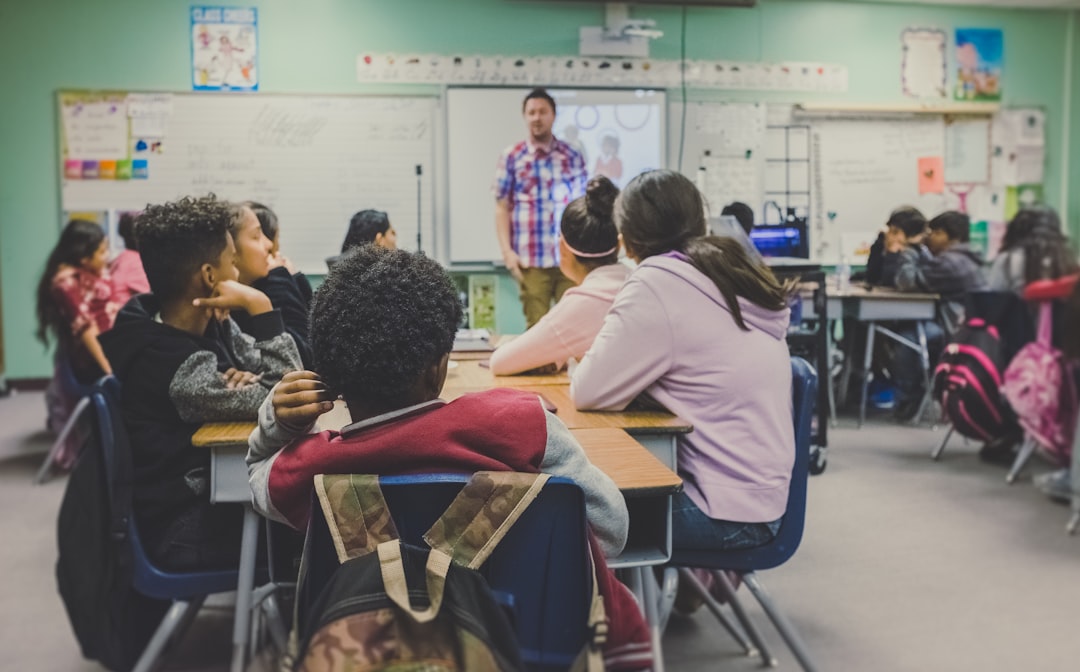What is it about?
Technology has brought new possibilities to education. The Internet and other online tools such as open-ended virtual worlds have the potential to facilitate a very different approach to teaching and learning: one that focuses on distributed student to student interactions as opposed to teacher-focused interaction - removing power and information barriers present in traditional classrooms. But can they actually "walk the walk"? We tried to answer this question with this study. To capture student communication, we viewed the classroom as a social network. Imagine each individual in the classroom a circle, and their communication (conversations, chats, messages...) as lines that connect the circles. The combination of all circles (nodes) and lines between them (links) can tell us who is popular in this class, who is isolated, who communicates with whom, and determine who has more control over the information flow. In traditional classrooms, the teacher tends to be the hub: students tend to communicate more with them (have more links to them) than with each other. The teacher, thus, controls the information flow. Is this an optimal learning environment? Some educational theories suggest otherwise, in tandem with the rise of platforms thriving on collaborative problem-solving (Reddit, Stack Overflow) and the necessity to negotiate complex decisions with various groups in modern democracy. We wanted to see if using a virtual world (Second Life) based on the curriculum rooted in the Open Source Educative Processes framework can help us create an alternative learning environment - where students rely on each other and the teacher recedes in the background. The results are encouraging. In a semester-long adolescent psychology class, students in the experimental condition experienced traditional teaching (instructor's lectures) combined with blogging (to post weekly reflections) and virtual world activities. Students in the control condition had lectures and blogging but no virtual world activities. In comparison with the control condition, the students who used the virtual world: (a) had more connections with each other (more communication) (b) took more control over the information flow (had a more stable network when the instructor was taken out of the network)
Featured Image

Photo by Kate Kalvach on Unsplash
Why is it important?
The findings of this study suggest that virtual worlds can be used to create a distributed, non-hierarchical learning environment in which students rely on many peers instead of one centralized authority figure. This has important implications for our role as citizens and life-long learners. Providing learning settings in which students learn to collaborate with others, solve problems together, overcome differences and build shared goals is crucial to advance democracy. As life-long learners, students will continue encountering such learning environments outside of formal schooling, which makes it increasingly important to equip them with an understanding of how to navigate such environments. For researchers interested in virtual worlds, our research suggests new ways of analyzing this topic (using social network analysis). For practitioners, our results provide initial evidence that can justify the use of virtual worlds in education in pursuit of equipping their students with crucial skills to become productive citizens and life-long learners.
Perspectives
I hope this article will inspire more research on technology from the social network perspective and within Deweyan theoretical frameworks.
Irina Kuznetcova
The Ohio State University
Read the Original
This page is a summary of: Multi-user virtual environments as a pathway to distributed social networks in the classroom, Computers & Education, March 2019, Elsevier,
DOI: 10.1016/j.compedu.2018.11.004.
You can read the full text:
Resources
Contributors
The following have contributed to this page










